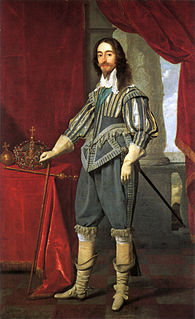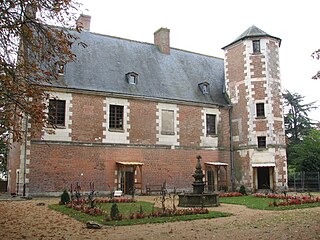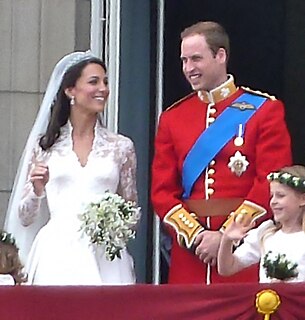 W
WThe Act for the Marriage of Queen Mary to Philip of Spain or Queen Mary's Marriage Act was passed by the Parliament of England in April 1554 to regulate the future marriage and joint reign of Queen Mary I and Philip of Spain, son and heir apparent of the Holy Roman Emperor Charles V.
 W
WThe wedding of Prince Charles and Lady Diana Spencer took place on Wednesday 29 July 1981 at St Paul's Cathedral in London, United Kingdom. The groom was the heir apparent to the British throne, and the bride was a member of the Spencer family.
 W
WKensington and Chelsea Register Office is an office for the registration of births, deaths, marriages and civil partnerships located in Chelsea Old Town Hall in Chelsea, London. It has hosted the weddings of many notable people.
 W
WThe Church of England Marriage Measure 2008, No. 1 is a Church of England Measure passed by the General Synod of the Church of England extending the right to marry in a Church of England church to parish churches with which a person has a qualifying connection.
 W
WThe Clergy Marriage Act 1548 was an Act of the Parliament of England. Part of the English Reformation, it abolished the prohibition on marriage of priests within the Church of England.
 W
WThe Clergy Marriage Act 1551 was an Act of the Parliament of England.
 W
WA Fleet Marriage was a common example of an irregular or a clandestine marriage taking place in England before the Marriage Act 1753 came into force on March 25, 1754. Specifically, it was one which took place in London's Fleet Prison or its environs during the 17th and, especially, the early 18th century.
 W
WHandfasting is a traditional practice that, depending on the term's usage, may correspond to an unofficiated wedding, a betrothal, or a temporary wedding. The phrase refers to the making fast of a pledge by the shaking or joining of hands.
 W
WThe Marriage Act 1540 was an Act of the Parliament of England.
 W
WThe Marriage Act 1753, full title "An Act for the Better Preventing of Clandestine Marriage", popularly known as Lord Hardwicke's Marriage Act, was the first statutory legislation in England and Wales to require a formal ceremony of marriage. It came into force on 25 March 1754. The Act was precipitated by a dispute about the validity of a Scottish marriage, although pressure to address the problem of clandestine marriage had been growing for some time.
 W
WMarriage is available in England and Wales to both opposite-sex and same-sex couples and is legally recognised in the forms of both civil and religious marriage. Marriage laws have historically evolved separately from marriage laws in other jurisdictions in the United Kingdom. There is a distinction between religious marriages, conducted by an authorised religious celebrant and civil marriages conducted by a state registrar. The legal minimum age to enter into a marriage in England and Wales is sixteen years, although this requires consent of parents and guardians if a participant is under eighteen. Certain relatives are not allowed to marry. For foreign nationals, there are also residency conditions that have to be met before people can be married. Same-sex marriage was introduced under the Marriage Act in March 2014.
 W
WThis is a list of Church of England Measures, which are the legislation of the Church of England. Some of these measures may have been repealed. Since 1970, Measures have been made by the General Synod; prior to then they were made by its predecessor, the Church Assembly. Under the Church of England Assembly (Powers) Act 1919, Measures have the same force as an Act of Parliament.
 W
WMJN v News Group Newspapers [2011] EWHC 1192 was a 2011 privacy case in English law decided by the High Court of Justice, in which a Premiership footballer obtained an injunction to prevent the publication of the details of an extra-marital affair which the footballer is alleged to have had with the lingerie model Kimberley West.
 W
WThe Spanish match was a proposed marriage between Prince Charles, the son of King James I of Great Britain, and Infanta Maria Anna of Spain, the daughter of Philip III of Spain. Negotiations took place over the period 1614 to 1623, and during this time became closely related to aspects of British foreign and religious policy, before breaking down completely.
 W
WTitulus Regius is a statute of the Parliament of England, issued in 1484, by which the title of King of England was given to Richard III.
 W
WThe Treaty of Tours was an attempted peace agreement between Henry VI of England and Charles VII of France, concluded by their envoys on 28 May 1444 in the closing years of the Hundred Years' War. The terms stipulated the marriage of Charles VII's niece, Margaret of Anjou, to Henry VI, and the creation of a truce of two years – later extended – between the kingdoms of England and France. In exchange for the marriage, Charles wanted the English-held area of Maine in northern France, just south of Normandy.
 W
WEnglish designer Sarah Burton, creative director of the luxury fashion house Alexander McQueen, designed the bridal gown worn by Catherine Middleton at her wedding to Prince William on 29 April 2011.
 W
WThe wedding dress worn by Meghan Markle at her wedding to Prince Harry on 19 May 2018 was designed by the British fashion designer Clare Waight Keller, artistic director of the fashion house Givenchy. The bride's veil was embroidered with flowers representing the countries of the Commonwealth, the California poppy, in honour of Meghan Markle's home state of California, and wintersweet, a flower that grows at Kensington Palace.
 W
WThe wedding dress of Princess Alexandra of Denmark was worn at her wedding to Albert Edward, Prince of Wales on 10 March 1863 in St George's Chapel, Windsor Castle. It was the first in British royal history to be photographed while being worn. The gown was made by London dressmaker Mrs James of Belgravia. It's now part of the British Royal Collection. In 2011, the dress was part of a display of royal wedding dresses at Kensington Palace.
 W
WThe wedding dress of Princess Alice of the United Kingdom was worn during a period of court mourning for the death of her father.
 W
WThe wedding of Prince Charles and Camilla Parker Bowles took place in a civil ceremony at Windsor Guildhall, on 9 April 2005. The ceremony, conducted in the presence of the couple's families, was followed by a Church of England Service of Prayer and Dedication at St George's Chapel, which incorporated an act of penitence. The groom's parents, Queen Elizabeth II and Prince Philip, Duke of Edinburgh, did not attend the civil wedding ceremony, but were present at the Service of Prayer and Dedication and held a reception for the couple in Windsor Castle afterwards.
 W
WThe wedding of Pavlos, Crown Prince of Greece, Prince of Denmark, and Marie-Chantal Miller took place on 1 July 1995 at St Sophia's Cathedral, Bayswater, London, England. The wedding ceremony, hosted by Miller's father, billionaire Robert Warren Miller, reportedly cost US$1.5 million and was attended by 1,400 guests. The wedding ceremony, receptions, and celebrations combined reportedly cost Miller $8 million. The wedding of Pavlos and Marie-Chantal brought together the largest gathering of royalty in London since Queen Elizabeth II married Prince Philip in 1947 and more crowned heads were in attendance than at the wedding of Charles, Prince of Wales and Lady Diana Spencer.
 W
WThe wedding of Prince Edward and Sophie Rhys-Jones took place on 19 June 1999 in St George's Chapel at Windsor Castle. Queen Elizabeth II's youngest child, Prince Edward, was created Earl of Wessex hours before the ceremony.
 W
WThe wedding of Prince George, Duke of York, and Princess Mary of Teck took place on 6 July 1893 at the Chapel Royal, St. James's Palace in London.
 W
WWife selling in England was a way of ending an unsatisfactory marriage by mutual agreement that probably began in the late 17th century, when divorce was a practical impossibility for all but the very wealthiest. After parading his wife with a halter around her neck, arm, or waist, a husband would publicly auction her to the highest bidder. Wife selling provides the backdrop for Thomas Hardy's 1886 novel The Mayor of Casterbridge, in which the central character sells his wife at the beginning of the story, an act that haunts him for the rest of his life, and ultimately destroys him.